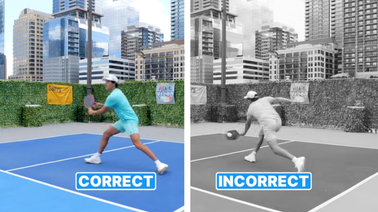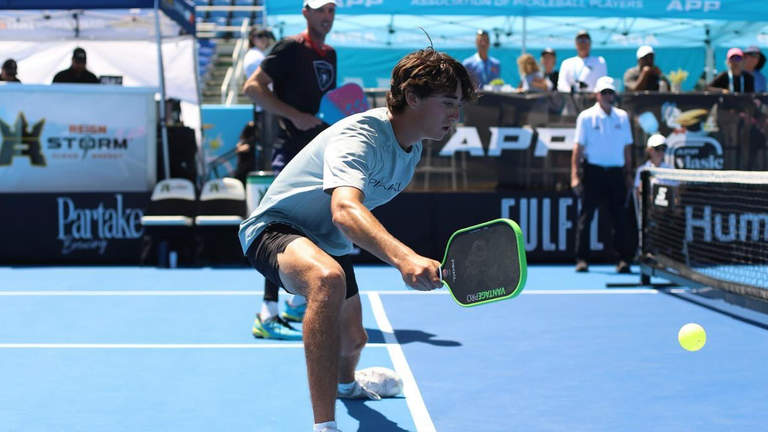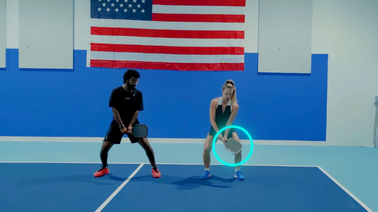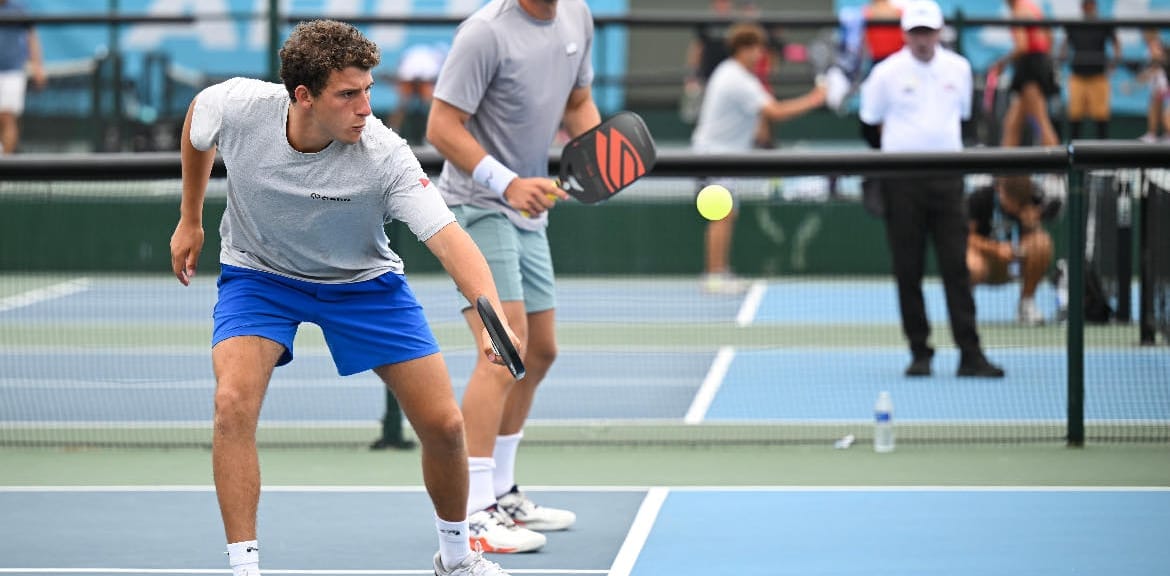
The Two-Position Reset Strategy To Master the Transition Zone
Consistency in pickleball is all about understanding the geometry of the court and how different ball trajectories require different paddle positions
There's a moment in every pickleball rally where the game shifts. You're in the transition zone, the ball's coming at you, and you've got maybe half a second to decide: do I attack, or do I reset?
Heads up: hundreds of thousands of pickleballers read our free newsletter. Subscribe here for cutting-edge strategy, insider news, pro analysis, the latest product innovations and more.
For most players, that decision comes down to one thing: can I keep the ball low?
Tanner Tomassi just shared a technique that's been absolutely instrumental to his game, the kind of small adjustment that separates consistent players from the ones who keep popping balls up into the kitchen.
Harder Than it Looks
Here's the thing about resets: they look simple. You're just hitting a soft shot from the transition zone, right?
But there's a hidden complexity that trips up most intermediate players.
When the ball comes at you from different angles, your instinct is to use the same paddle position every time. That's where things fall apart.
The issue is particularly brutal when the ball's coming at you outside your legs. You know that feeling when you're trying to keep it down, but somehow it still pops up? That's not a timing problem. That's a positioning problem.
The Two-Position Reset Strategy
Tanner breaks this down into two distinct scenarios, and the difference between them is crucial:
- When the ball comes between your legs: Keep your paddle tip down. This is the traditional reset position most players learn, and it works perfectly fine when the ball's coming straight at your body. Your paddle angle naturally keeps the ball on a downward trajectory.
- When the ball comes outside your legs: Here's where most players go wrong. They keep that paddle tip down, thinking consistency is key. But Tanner's discovered something different: catch it completely sideways on both sides. Rotate your paddle so it's perpendicular to the ground rather than angled downward.
Why does this matter? When your paddle tip is down and the ball's coming from the side, the geometry works against you.
The ball tends to pop up high, which is basically handing your opponents an easy put-away. By going sideways, you're changing the contact point and the angle of deflection. The ball stays down and short to the net, exactly where you want it.
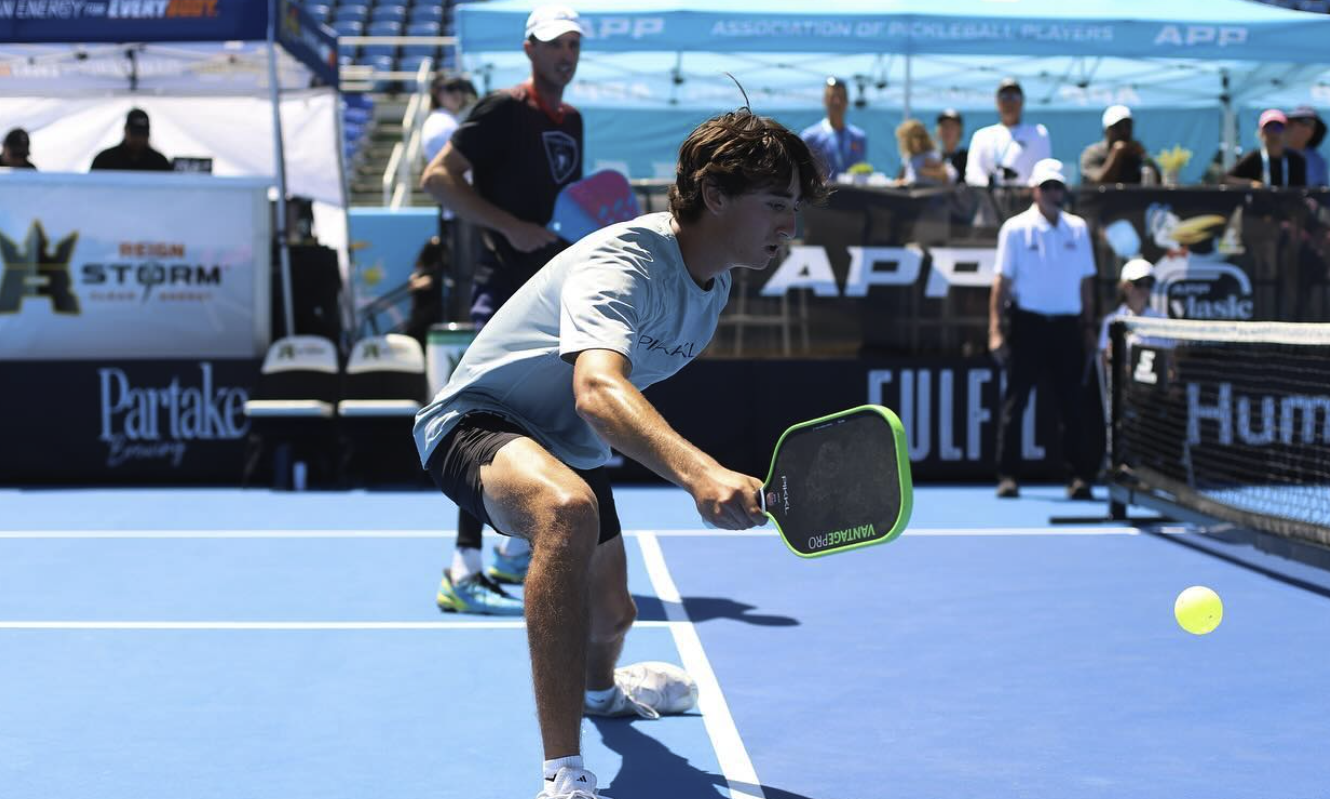
The Game-Changer for Consistency
Tanner emphasizes that this adjustment has been "such a game changer" for his consistency. And that's the real takeaway here. Consistency in pickleball isn't about hitting harder or moving faster.
It's about understanding the geometry of the court and how different ball positions require different solutions.
Think about it this way: a 6.0 player isn't necessarily more athletic than a 4.5 player. They've just solved more problems.
- They know that a reset from the baseline looks different than a reset from the transition zone.
- They know that a ball coming at their body requires a different approach than one coming from the side.
These micro-adjustments compound over time.
The transition zone is where rallies are won and lost. You're not at the net yet, so you can't be aggressive. You're not at the baseline, so you can't just block it back. You've got to be precise. You've got to keep the ball low. And you've got to do it from multiple angles.

Why This Matters Beyond Just Resets
Pickleball rewards players who can adapt their mechanics based on court position and ball trajectory.
It's not about having one perfect swing. It's about having a toolkit of adjustments.
When you're learning pickleball, coaches often teach you the "correct" way to hit each shot. But as you improve, you realize that the correct way changes depending on the situation. A volley at the net looks different than a volley from the transition zone. A dink from the kitchen looks different than a reset from the baseline. And a reset from between your legs looks different than a reset from the side.
Tanner's tip is really about developing that situational awareness.
How to Practice This
If you want to incorporate this into your game, the key is repetition with intention. You can't just hit a few resets and expect it to stick. You need to practice the two positions separately until they become automatic.
- Start with a partner feeding you balls from the transition zone.
- Have them hit balls directly at you, between your legs.
- Get comfortable with the paddle-down position.
- Then have them hit balls to your sides, and practice the sideways paddle position.
The goal is to get to a point where you don't have to think about it. Your body just knows which position to use based on where the ball's coming from.

Love Pickleball? Join 100k+ readers for free weekly tips, news & gear deals.
Subscribe to The DinkGet 15% off pickleball gear at Midwest Raquet Sports




